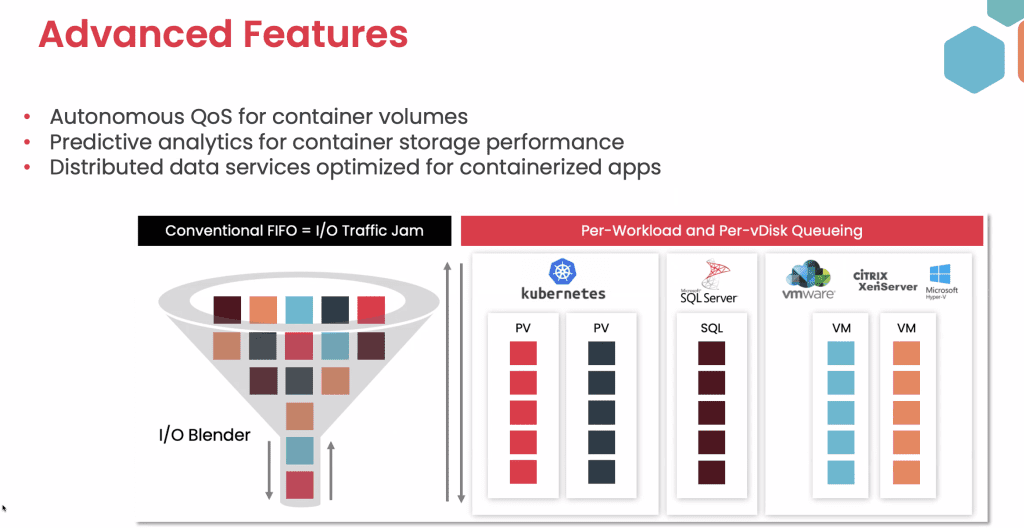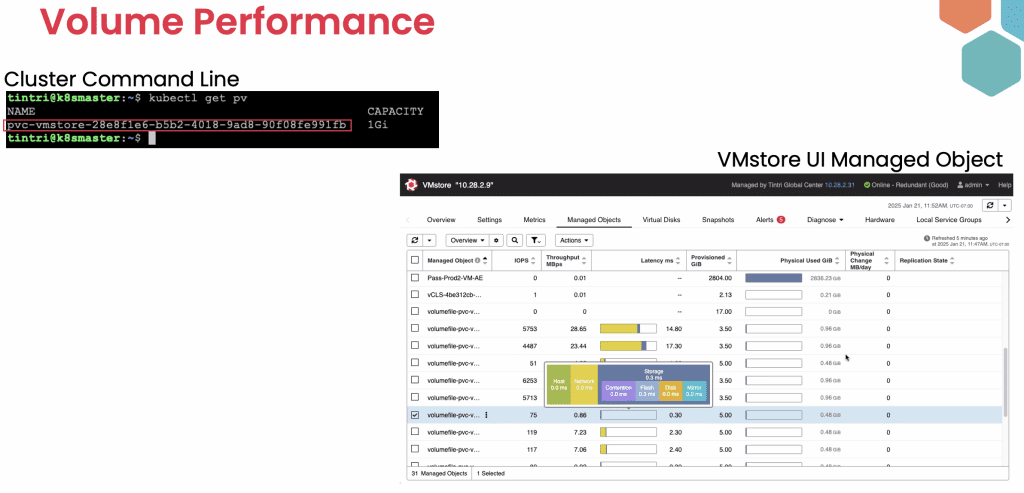As enterprises evaluate their virtualization and container strategies amid evolving market dynamics, Tintri has stepped up with enhanced Kubernetes support and robust data protection features designed to simplify management and improve resilience.
Osmium Data Group was recently briefed by Tintri, a DDN company. While DDN focuses on AI and HPC workloads, Tintri has been quietly supporting enterprise-grade workloads for more than a decade with VMstore – a hypervisor-agnostic virtualization & now also Kubernetes platform.
Tintri VMstore runs on T7000 NVMe appliances but also supports additional cloud deployment models, including:
- Tintri Cloud Engine (VM-based, single controller)
- Tintri Cloud Engine on AWS (ideal for snapshot-based replication)
- Tintri Cloud Platform (cloud offering)
Osmium Data Group analysts already covered VMstore’s hypervisor agnostic capabilities in this article.
Let’s unwrap what Tintri is announcing in 2025:
- Expanding Kubernetes Support
- Kubernetes Observability
- Introducing Enhanced Data Protection Capabilities
Expanding Kubernetes Support
Tintri acknowledges the growing role of containers as “the new normal” for deploying workloads in organizations. The company is introducing a new CSI driver that allows customers to leverage their existing VMstore deployments for both VMs and containers.
Basic capabilities include dynamic provisioning and management of persistent volumes for containers, along with automated volume attachment and detachment to container pods. This initial release also provides extra visibility and I/O path management capabilities for containers.
Advanced capabilities include autonomous quality of service (QoS) for container volumes, predictive analytics for container storage performance, and distributed data services optimized for containerized apps.
QoS is worth mentioning: Tintri provides both per-workload and per-vDisk queuing, ensuring that all workloads running on VMstore are provided with equal QoS treatment. This applies not only to virtualization and database workloads, but also to individual persistent volumes in Kubernetes.

Kubernetes Observability
Persistent volume management is available on both Tintri Global Center (TGC) – which displays all objects in an organization and supports up to 64 VMstore appliances – and at the local level within an individual VMstore appliance management console.
TGC can display all Kubernetes clusters alongside their associated containers, persistent volumes, and persistent volume claims. It provides a view of persistent volume (PV) details, PV snapshots, and PV metrics.
In addition, rich observability for performance is available both at the command-line level and management interface, with the ability to drill down on latency factors at the host, network, and storage level (including a breakdown of storage factors).

Glas-DP: Introducing Advanced Data Protection
In addition to Kubernetes support, Tintri is announcing immutable snapshots on VMstore and introducing an additional security role – the Data Protection Admin – for critical snapshot operations..
Branded as Glas-DP, the snapshot locking feature prevents both accidental and intentional snapshot deletions. Snapshots can be locked individually or during snapshot schedule creation; a user will require additional privileges to unlock a snapshot schedule or perform other restricted operations, such as deleting a snapshot.
The solution provides the ability to unlock schedules, but any previously locked snapshots will remain locked. Currently, the following types of snapshots support locking: manual (user-generated), scheduled, and auto-generated cloning snapshots.
The Osmium Perspective
Tintri ramped up its engineering initiatives in 2024 and is continuing this journey.
The timing of these features is ideal: many organizations are currently reviewing their virtualization strategies, weighing the cost of remaining in the VMware ecosystem against the risks and time investment involved in migrating to other hypervisors.
At the same time, the growing adoption of containers as the emerging enterprise standard – for both in-house and commercial workloads – requires the ability to run VMs and containers side by side without performance degradation.
In this aspect, Tintri is a solution worth evaluating considering:
- A hypervisor-agnostic platform (VMware, Hyper-V, Citrix Xen & Xen-ng, RHEV)
- Solid foundational container support capabilities
- Cross-platform (virtualization / containers) QoS and observability
Osmium Data Group analysts had the opportunity to review the company’s roadmap, and it looks promising. Customers can expect additional platform support and enhanced security features in response to evolving market trends.


